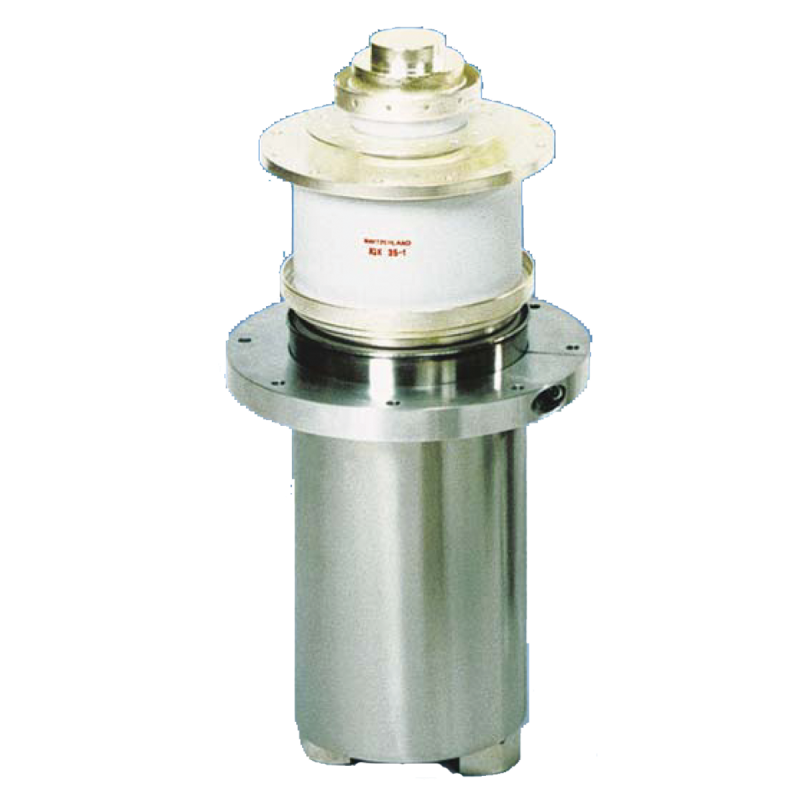

Category


Фотографии предназначены только для информационных целей. Посмотреть спецификацию продукта
please use latin characters
Ламповые генераторы (лампой является триода) — это устройства, предназначенные для поверхностной тепловой обработки с рабочей частотой от 100 кГц до 4 МГц. Однако наиболее часто используемые в промышленности устройства работают с частотой около 400 кГц. Под модернизацией ламповых генераторов понимается замена основных компонентов устройства. Замена этих компонентов направлена на ремонт или улучшение технической работоспособности устройства, а также на достижение лучшего технологического эффекта. Генераторы, подлежащие модернизации, чаще всего — это устройства, разработанные и сконструированные как отечественными, так и зарубежными производителями в 50-х, 60-х, 70-х и 80-х годах прошлого века. Ламповые генераторы в настоящее время часто (из-за появления на рынке быстрых полупроводниковых ключей) заменяются транзисторными генераторами (с транзисторами типа IGBT или MOSFET).
Транзисторные генераторы обладают следующими преимуществами:
Ламповые генераторы обладают следующими преимуществами:
Ламповой генератор состоит в основном из двух блоков:
Модернизацию генератора следует рассматривать с нескольких аспектов:
Выполнение описанных выше модернизаций позволяет генераторам, произведённым десятки лет назад, оставаться весьма полезными для применения даже в технологически сложных процессах тепловой обработки и при значительно меньших финансовых затратах, чем требовали бы инвестиции в современные транзисторные генераторы.
Компания DACPOL предлагает комплексный подбор заменителей для вышедших из производства ламп фирмы LAMINA: T-25W, T-25P, T26W/22, T26W/23, T-26P/22, T-26P/23, T-10P/22, T-12W/21, T-60W/12, T-60W/22, T-60V/12. Мы подбираем заменитель и предоставляем комплексную услугу по замене лампы с запуском генератора на новой лампе.
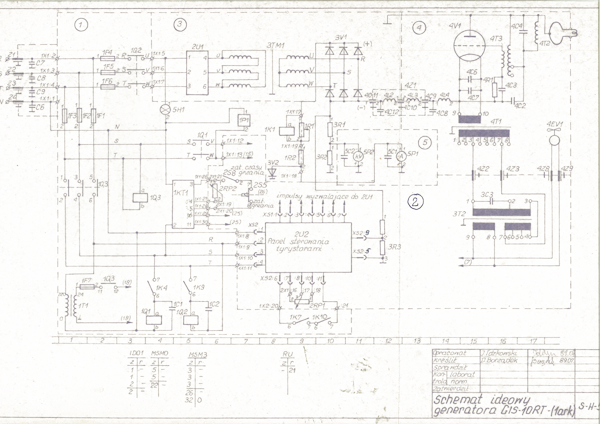
На приложенной схеме показана основная принципиальная схема модернизированного генератора типа GIS-10; после модернизации генератор был назван GIS-10RT (RT — тиристорный регулятор). Цифрами в кружках 1, 3 обозначен силовой ток высокого напряжения. Цифра 4 обозначает собственно блок индукционного генератора. Цифрами 2, 5 обозначены блоки управления, измерения, защиты и питания катода триоды. Генераторы типа GIS производились в 60-х и начале 70-х годов на заводах WAREL и после модернизации до сегодняшнего дня успешно работают на небольших предприятиях. До модернизации для регулировки мощности использовался тирратронный выпрямитель на стороне трансформатора высокого напряжения 3TM1 (на его месте сейчас стоит диодный выпрямитель 3V1). Модернизация заключалась в удалении тирратронного регулятора и установке тиристорного регулятора 2U1 с панелью управления 2U2, а также на стороне высокого напряжения диодного выпрямителя (диодные мосты) 3V1. При необходимости модернизируется резонансный контур 4V1, 4T3, 4T4, 4T2.
Модернизация генератора типа HFG/J40 была проведена в 2017 году на предприятии FAMUR S.A. — заводах, производящих оборудование для горнодобывающей промышленности. Генератор HFG/J40 был произведён в 1962 году австрийской фирмой ELIN. Его рабочая частота: 400 кГц, а выходная мощность (гарантируемая производителем) на зажимах возбудителя — 40 кВт. В начале 90-х годов прошлого века компания ELCAL провела модернизацию генератора, которая заключалась в замене триоды производства BBC на триоду отечественного производства типа T26W, а также замене тирратронного регулятора на тиристорный регулятор типа PRW 210/440 и установке диодных выпрямителей. В 2017 году, после примерно 25 лет эксплуатации, компания Dacpol Service осуществила очередную модернизацию устройства. Ниже показаны отдельные фотографии, иллюстрирующие устройство до модернизации.
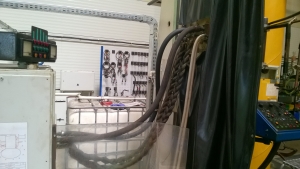 |
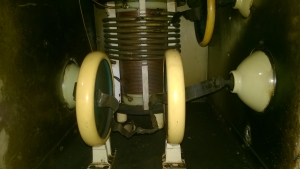 |
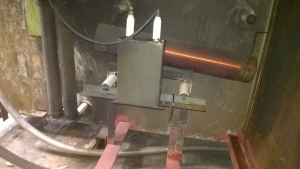 |
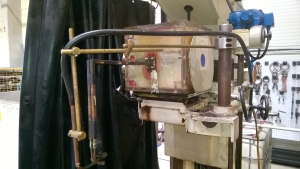 |
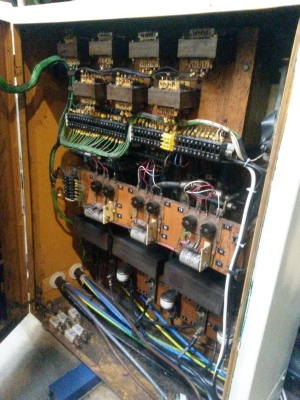 |
Ниже показаны отдельные фотографии, иллюстрирующие устройство после модернизации.
 |
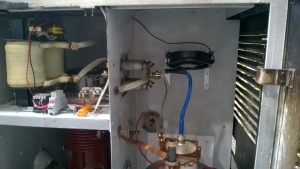 |
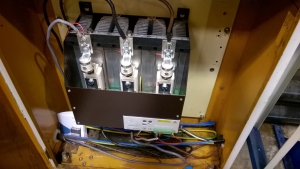 |
 |
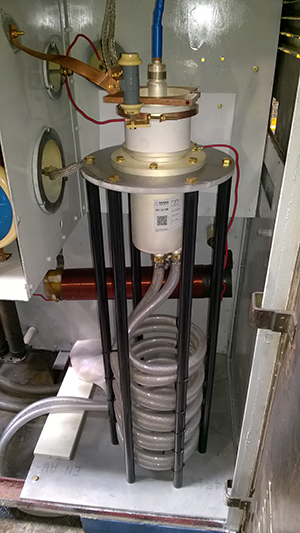 |
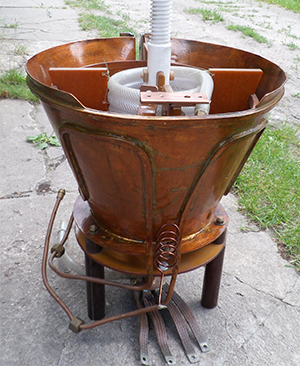 |
Вы заинтересованы в этом продукте? Вам нужна дополнительная информация или индивидуальные расценки?
Вы должны быть зарегистрированы
Ламповые генераторы (лампой является триода) — это устройства, предназначенные для поверхностной тепловой обработки с рабочей частотой от 100 кГц до 4 МГц. Однако наиболее часто используемые в промышленности устройства работают с частотой около 400 кГц. Под модернизацией ламповых генераторов понимается замена основных компонентов устройства. Замена этих компонентов направлена на ремонт или улучшение технической работоспособности устройства, а также на достижение лучшего технологического эффекта. Генераторы, подлежащие модернизации, чаще всего — это устройства, разработанные и сконструированные как отечественными, так и зарубежными производителями в 50-х, 60-х, 70-х и 80-х годах прошлого века. Ламповые генераторы в настоящее время часто (из-за появления на рынке быстрых полупроводниковых ключей) заменяются транзисторными генераторами (с транзисторами типа IGBT или MOSFET).
Транзисторные генераторы обладают следующими преимуществами:
Ламповые генераторы обладают следующими преимуществами:
Ламповой генератор состоит в основном из двух блоков:
Модернизацию генератора следует рассматривать с нескольких аспектов:
Выполнение описанных выше модернизаций позволяет генераторам, произведённым десятки лет назад, оставаться весьма полезными для применения даже в технологически сложных процессах тепловой обработки и при значительно меньших финансовых затратах, чем требовали бы инвестиции в современные транзисторные генераторы.
Компания DACPOL предлагает комплексный подбор заменителей для вышедших из производства ламп фирмы LAMINA: T-25W, T-25P, T26W/22, T26W/23, T-26P/22, T-26P/23, T-10P/22, T-12W/21, T-60W/12, T-60W/22, T-60V/12. Мы подбираем заменитель и предоставляем комплексную услугу по замене лампы с запуском генератора на новой лампе.

На приложенной схеме показана основная принципиальная схема модернизированного генератора типа GIS-10; после модернизации генератор был назван GIS-10RT (RT — тиристорный регулятор). Цифрами в кружках 1, 3 обозначен силовой ток высокого напряжения. Цифра 4 обозначает собственно блок индукционного генератора. Цифрами 2, 5 обозначены блоки управления, измерения, защиты и питания катода триоды. Генераторы типа GIS производились в 60-х и начале 70-х годов на заводах WAREL и после модернизации до сегодняшнего дня успешно работают на небольших предприятиях. До модернизации для регулировки мощности использовался тирратронный выпрямитель на стороне трансформатора высокого напряжения 3TM1 (на его месте сейчас стоит диодный выпрямитель 3V1). Модернизация заключалась в удалении тирратронного регулятора и установке тиристорного регулятора 2U1 с панелью управления 2U2, а также на стороне высокого напряжения диодного выпрямителя (диодные мосты) 3V1. При необходимости модернизируется резонансный контур 4V1, 4T3, 4T4, 4T2.
Модернизация генератора типа HFG/J40 была проведена в 2017 году на предприятии FAMUR S.A. — заводах, производящих оборудование для горнодобывающей промышленности. Генератор HFG/J40 был произведён в 1962 году австрийской фирмой ELIN. Его рабочая частота: 400 кГц, а выходная мощность (гарантируемая производителем) на зажимах возбудителя — 40 кВт. В начале 90-х годов прошлого века компания ELCAL провела модернизацию генератора, которая заключалась в замене триоды производства BBC на триоду отечественного производства типа T26W, а также замене тирратронного регулятора на тиристорный регулятор типа PRW 210/440 и установке диодных выпрямителей. В 2017 году, после примерно 25 лет эксплуатации, компания Dacpol Service осуществила очередную модернизацию устройства. Ниже показаны отдельные фотографии, иллюстрирующие устройство до модернизации.
 |
 |
 |
 |
 |
Ниже показаны отдельные фотографии, иллюстрирующие устройство после модернизации.
 |
 |
 |
 |
 |
 |
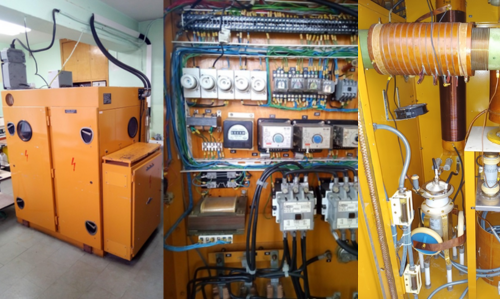 Модернизация индукционного генератора REL30Tr - новая эра эффективности
Модернизация индукционного генератора REL30Tr - новая эра эффективности
Не удаётся отправить вашу оценку отзыва
Пожаловаться на комментарий
Жалоба отправлена
Не удаётся отправить вашу жалобу
Оставьте свой отзыв
Отзыв отправлен
Не удаётся отправить отзыв
